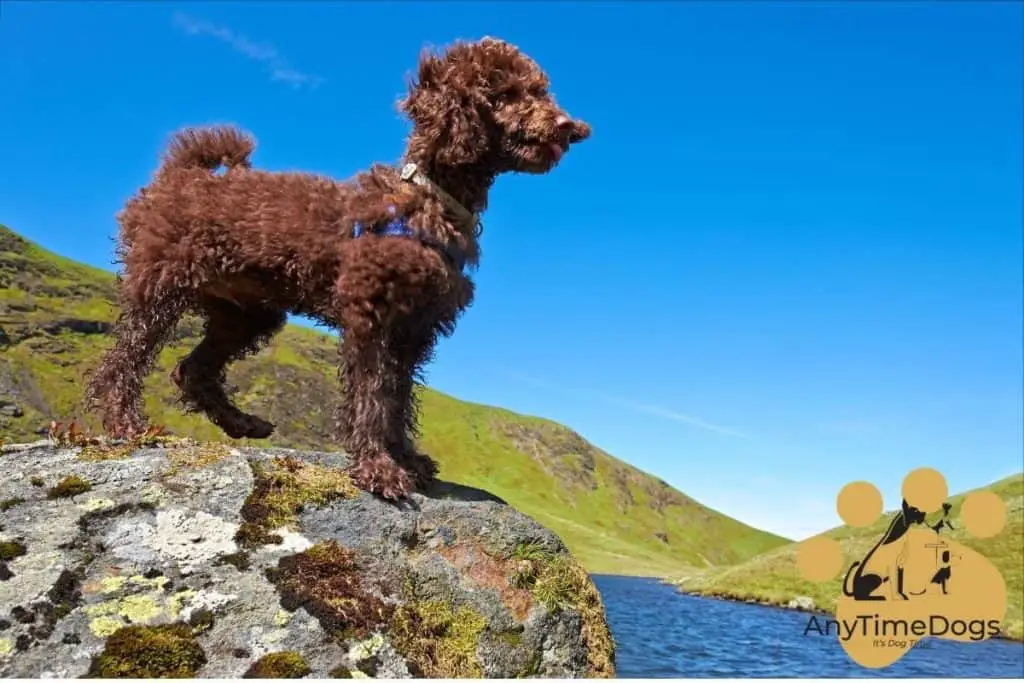I own a miniature poodle and I was wondering if they like to swim. It is always fun when your pet enjoys swimming just as much as you do! This blog post will explore whether or not dogs in general, including miniatures, enjoy swimming.
Do miniature poodles like to swim? What about other breeds of dog? So glad you asked! We’ll be exploring this question throughout this article. Let’s get started!
What is a miniature poodle?
A miniature poodle is a breed of dog in the toy group. Miniature poodles were bred in Germany in the 14th century and have been popular with royalty ever since.
Miniature poodles are typically between 10 and 15 inches (25.4 to 38.1 cm) tall at the withers (the highest part of their backs).
They generally weigh between 6 and 14 pounds (2.7 and 6.4 kg). Most miniature poodles have curly, soft fur that sheds minimally or not at all.
Why are some miniature poodles lighter than others?
A lot of factors are responsible for the difference in coloration between different miniature poodles. These include the concentration of pigment cells called melanocytes in their fur and skin, which is genetically determined.
Miniature poodles with more melanin in their coats will have dark coats, while those with little melanin can be blonde. The amount of time that a miniature poodle has been exposed to the sun also affects the color of its coat.
The size and shape of each dog’s face are also unique, as are the length and thickness of its hair.
How long do miniature poodles live?
The average lifespan of a healthy miniature poodle is 10 to 15 years. Poodles live longer than many other breeds, but the short-haired type often lives only a little over 10 years and the curly-coated ones can live up to 18 years or more.
How big are miniature poodles?
Miniature poodles are typically between 10 and 15 inches (25.4 to 38.1 cm) tall at the withers (the highest part of their backs).
In the United States, the breed standards for miniature poodles vary from 6 to 18 pounds (2.7 to 8.2 kg), but they will usually be in the middle of the standard height range, with some larger and smaller individuals.
Do miniature poodles like to swim?
Yes, miniature poodles love swimming. Many poodles enjoy swimming. The breed’s webbed paws make them excellent swimmers, and they’re typically at home in the water.
How to take care of your miniature poodle?
1. Bathe your miniature poodle once a month with shampoo specifically formulated for dogs. Don’t use any high-quality human shampoos or treatments that contain moisturizers, as these can lead to skin irritation in a dog’s coat. Gently wipe the face and rinse carefully around the eyes.
2. Clean teeth daily by brushing with a specialized canine toothpaste and toothbrush.
3. Keep ears clean and dry to avoid infections, which can lead to ear mites or even deafness. Infections are also common in the folds of the skin on the face. Gently wipe around your poodle’s eyes each day with a moistened cotton ball or soft cloth to remove any discharge before it becomes crusty.
4. Provide regular dental care. Your veterinarian will show you how to brush your dog’s teeth, but it must be done daily to have a beneficial effect. Use canine toothpaste, which has been specially formulated for dogs’ teeth and gums.
5. Give heartworm preventative medication throughout the mosquito season as prescribed by your vet.
6. If your poodle has long hair, it’s a good idea to get him or her groomed at least once a month. Grooming can cut down on shedding and help remove dirt and mats from the coat. Regular grooming will also prevent painful tangles and matting of hair by placing tension on all hairs evenly.
7. If your poodle’s fur is clipped, use a high-quality canine clipper to keep her skin healthy. These are available from veterinary supply stores and pet supply catalogs.
8. Feed a high-quality diet that meets your dog’s nutritional requirements. Some miniature poodles do very well eating one of the popular commercial dry foods. Others do equally well eating a home-prepared or canned diet.
9. Provide your poodle with plenty of companionship and exercise, as most dogs need both to live a long, healthy life.
The pros and cns of owning a minoiature poodle:
Pros:
They are lively, affectionate, and gentle. They are intelligent and generally easy to train. Being very sociable animals, they get on well with people as well as other dogs. The poodle’s coat is usually easy to maintain without much smell or shedding.
Roles of the miniature poodle in the history
Miniature poodles have been involved with the circus since the 18th century. In those days, they were mainly used as trick dogs and were a favorite of Queen Victoria.
They are also used in dog agility competitions and many who own a poodle will be seen wearing a harness complete with dangling medals at Crufts.
Cons:
Being a breed that has been handled a lot by humans, they can become quite spoilt and even aggressive when they do not get the attention that they think they deserve.
It is also essential for owners to remember that, as with all dogs, routine worming and inoculation should be kept up to date.
Conclusion:
If you’re looking for a small dog that is spirited, intelligent, and has the best hair of any breed, then you should consider getting your hands on a miniature poodle.
You might be wondering how to take care of one or if they like to swim (they do!) but there are also some downsides – namely their grooming needs- so make sure it’s right for you before committing!
We’ve given you all the information needed in this article on what makes these dogs unique. As always, feel free to comment with any questions below!

